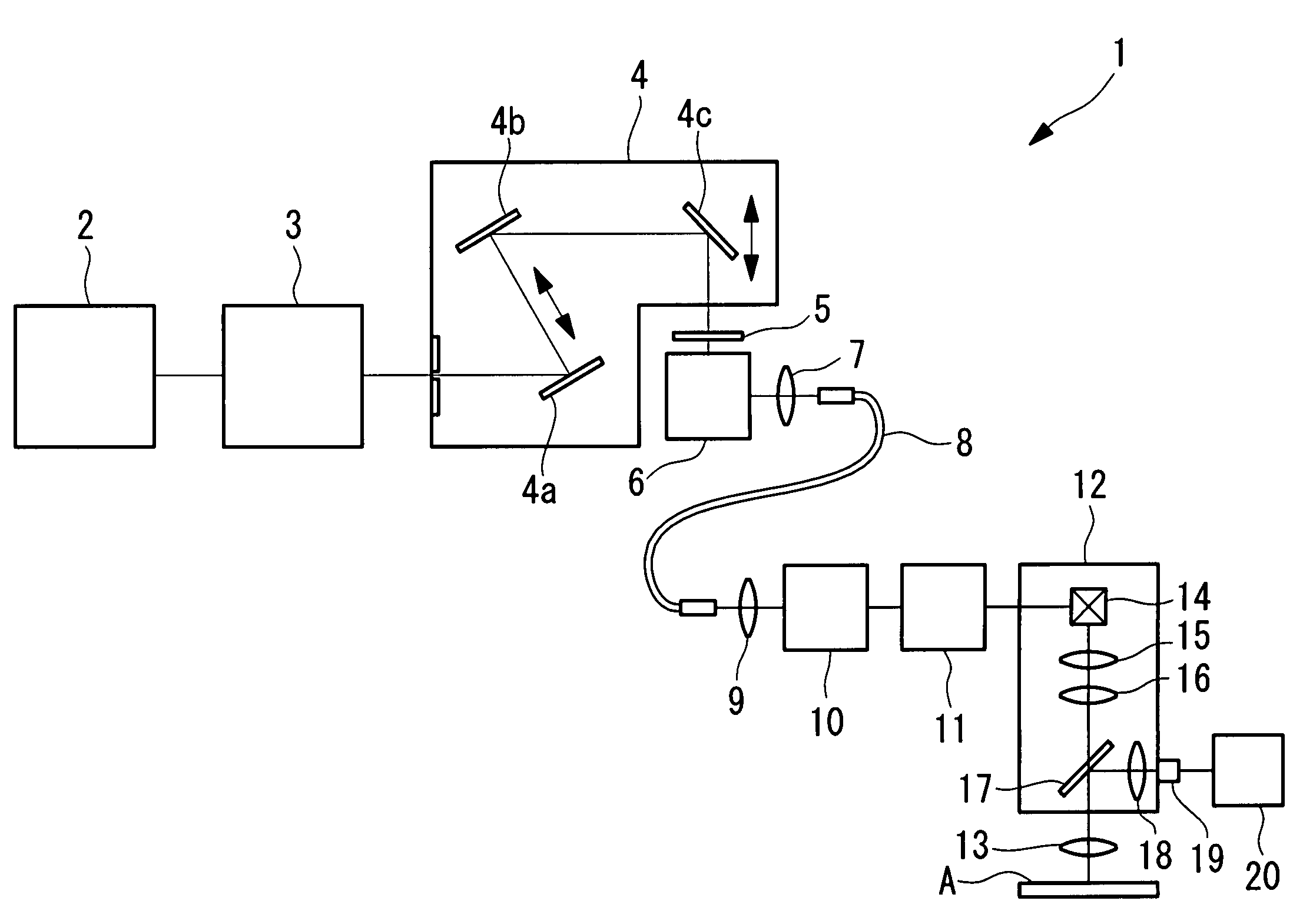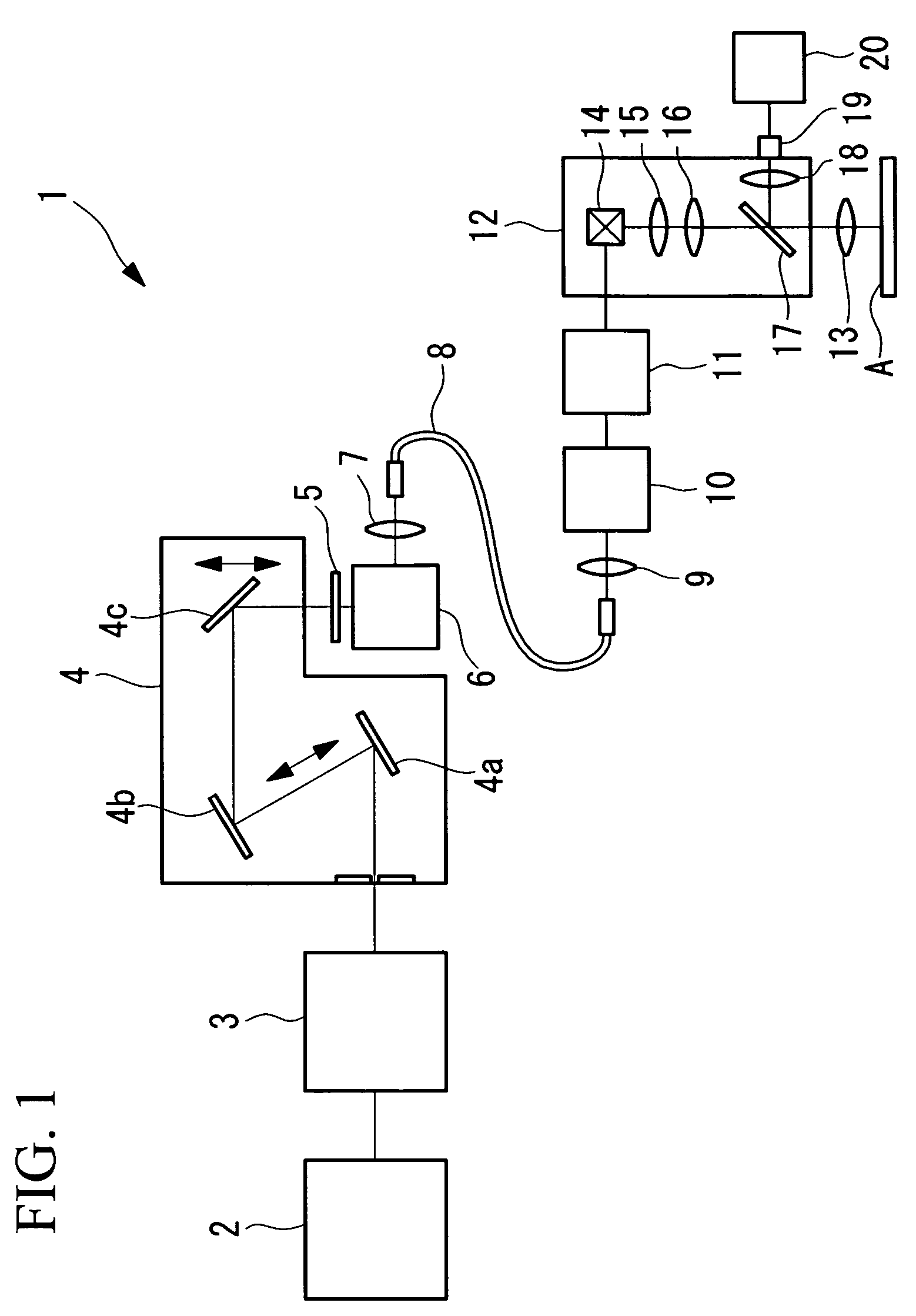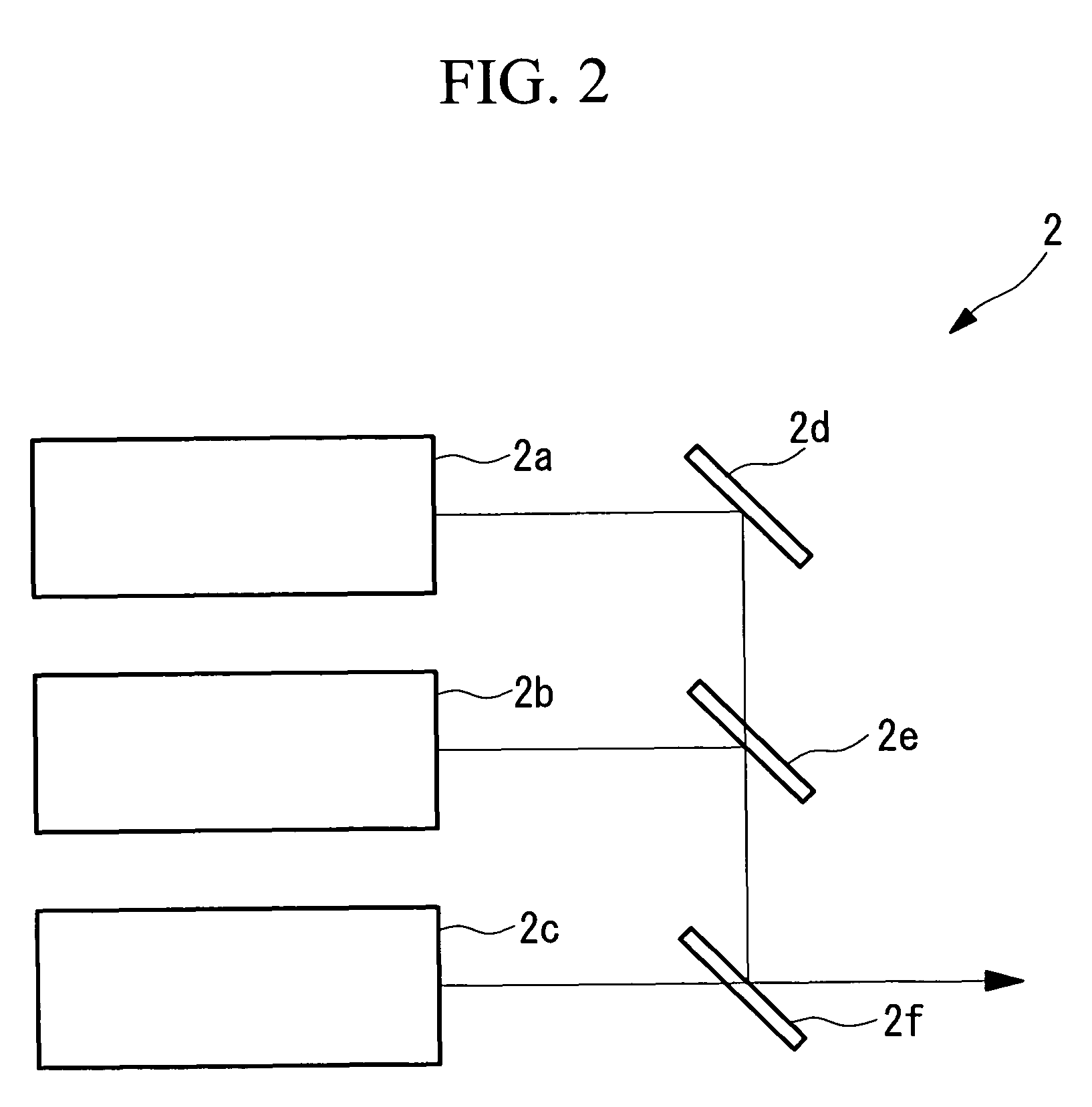Laser microscope
a laser microscope and microscope technology, applied in the field of laser microscopes, can solve the problems of impaired multiphoton excitation efficiency, increased pulse width of ultrashort-pulsed laser light emitted from the end of the objective lens, and possible use, so as to reduce the drop in output power, reduce the size of the positive dispersion element, and improve the multiphoton excitation efficiency
- Summary
- Abstract
- Description
- Claims
- Application Information
AI Technical Summary
Benefits of technology
Problems solved by technology
Method used
Image
Examples
Embodiment Construction
[0049]A laser microscope 1 according to an embodiment of the present invention is described below with reference to FIGS. 1 and 2.
[0050]As shown in FIG. 1, the laser microscope 1 according to this embodiment is a multiphoton-excitation-type laser microscope in which a multiphoton-excitation effect is induced in a specimen A. The laser microscope 1 includes a laser light source 2 for emitting ultrashort-pulsed laser light, an average-output-power adjusting optical system 3, a pulse expander 4, a quarter-wave plate 5, an alignment-adjusting optical system 6, a coupling optical system 7, a large-diameter singe-mode fiber 8, a collimator optical system 9, a beam-shaping optical system 10, a pulse compressor 11, and a microscope main body 12, in this order from the laser light source 2 side.
[0051]The laser light source 2 emits ultrashort-pulsed laser light with a tunable wavelength, for example, in the wavelength range of 700 to 1000 nm.
[0052]The average-output-power adjusting optical sy...
PUM
 Login to View More
Login to View More Abstract
Description
Claims
Application Information
 Login to View More
Login to View More - R&D
- Intellectual Property
- Life Sciences
- Materials
- Tech Scout
- Unparalleled Data Quality
- Higher Quality Content
- 60% Fewer Hallucinations
Browse by: Latest US Patents, China's latest patents, Technical Efficacy Thesaurus, Application Domain, Technology Topic, Popular Technical Reports.
© 2025 PatSnap. All rights reserved.Legal|Privacy policy|Modern Slavery Act Transparency Statement|Sitemap|About US| Contact US: help@patsnap.com



